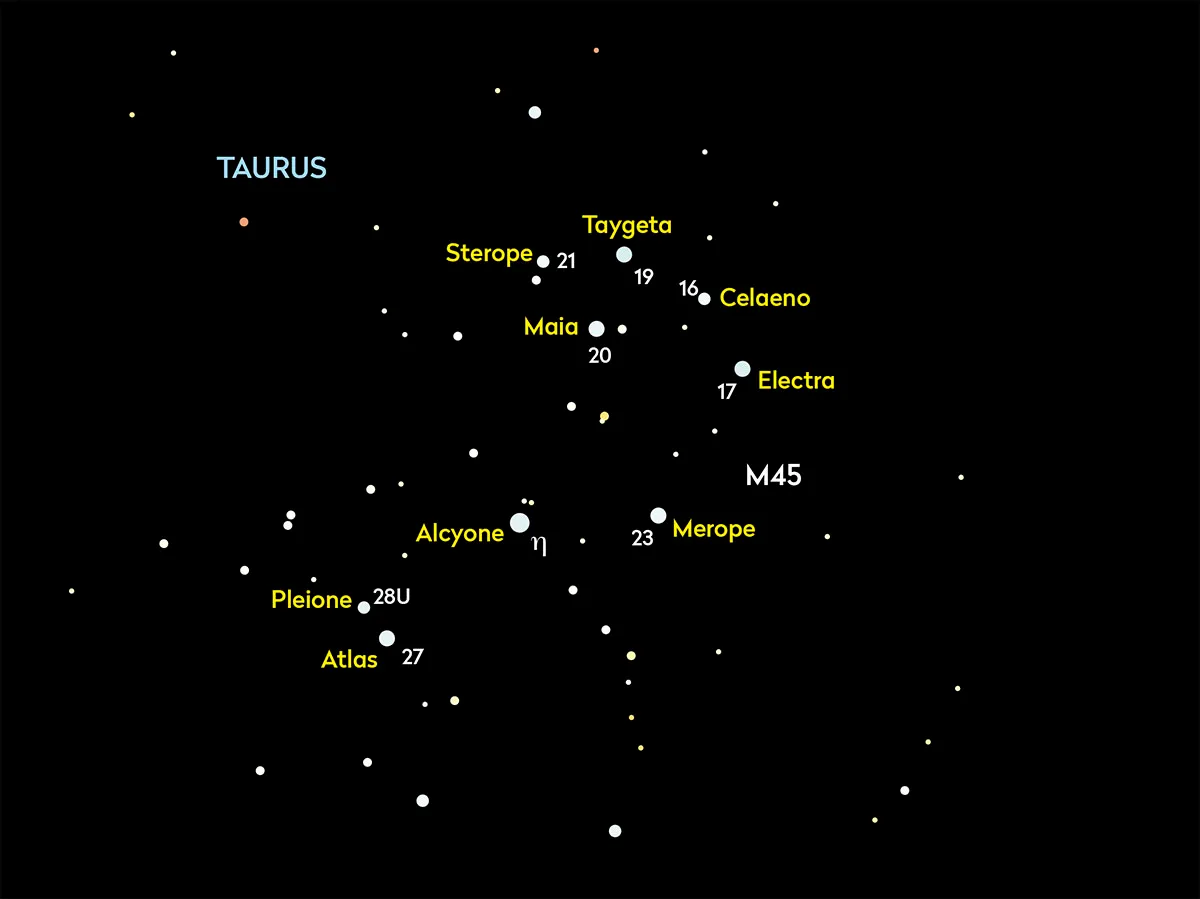The Pleiades, M45 are a mainstay of the autumn night sky, an easy-to-find naked-eye bright cluster in the northwest corner of Taurus the Bull.
The basic shape of the Pleiades is distinctive, resembling a box with a handle, reminiscent of part of the Plough asterism.

The star furthest from the ‘handle’ is Electra, one of the named members of this cluster which represent the Seven Sisters of Greek mythology.
The parents are present too: Atlas, the handle star furthest from the box, and Pleione, the dimmer one above it.
Electra is a blue-white star with a spectral type B6 IIIe.‘B6’ indicates the star’s colour and temperature being around 14,000K.
The ‘III’ indicates that it’s a normal giant, while the ‘e’ reveals that its spectrum has emission lines present as well as the more commonly seen dark absorption lines.

Electra is estimated to be around 400 lightyears distant, 44 lightyears closer than the centre of the Pleiades.
It shines at mag. +3.7 and is interesting in that it rotates very fast.
The Sun takes about 25 days to rotate at the equator and 35 days at the poles, a rotation speed of around 2km/s.
Electra has a projected rotational velocity of 181km/s.
However, the star’s rotational axis is inclined to our line of sight by an estimated 46.8° and if you were to ‘square up’ Electra so that its rotational axis was at right angles to our line of sight, the rotational velocity would be around 320km/s.
This rapid speed of rotation will flatten the star into an oblate shape. A disc of ejected material surrounds the star.
Electra is estimated to be six times larger than the Sun and around 1,225 times more luminous.
If you'd like to capture what you see, read our guide on how to photograph the Pleiades.
This guide originally appeared in the November 2022 issue of BBC Sky at Night Magazine.
